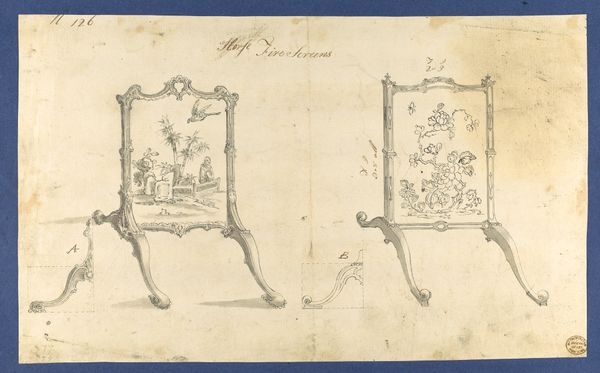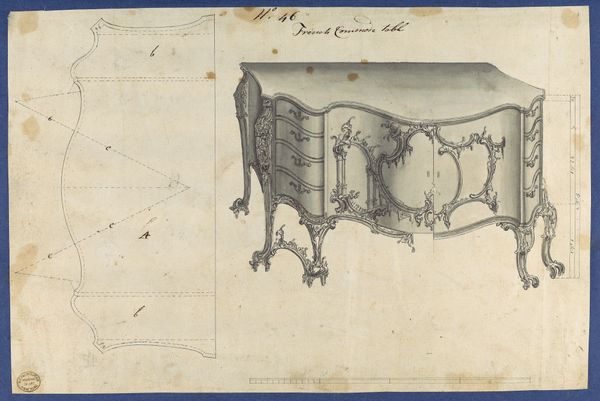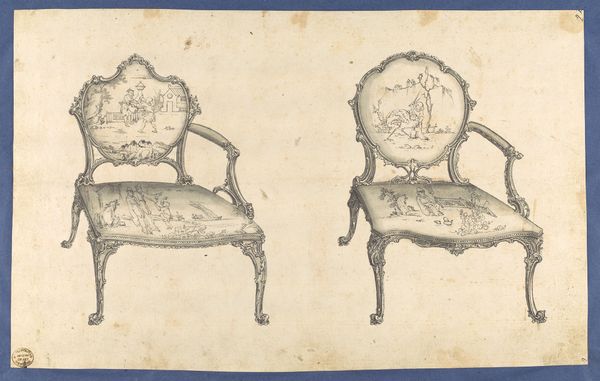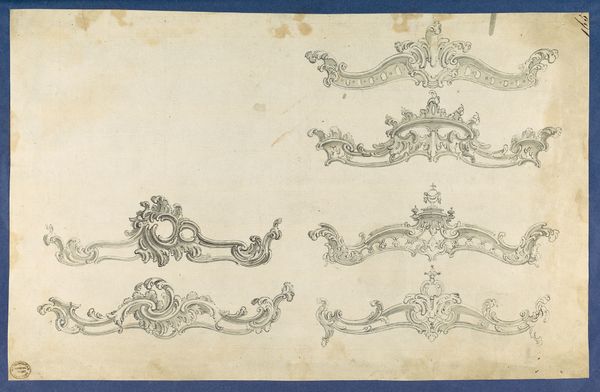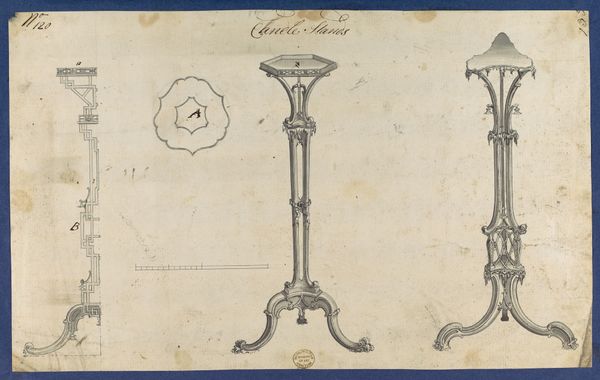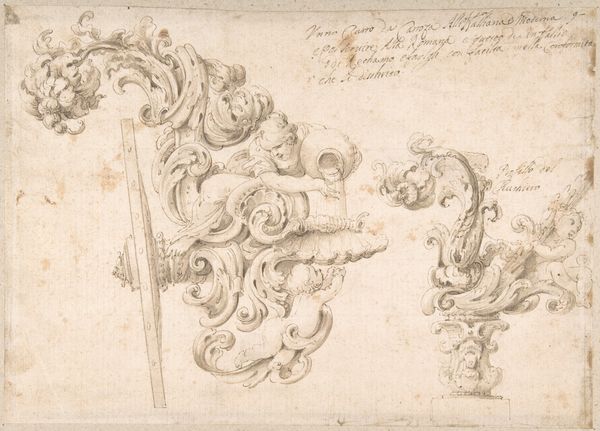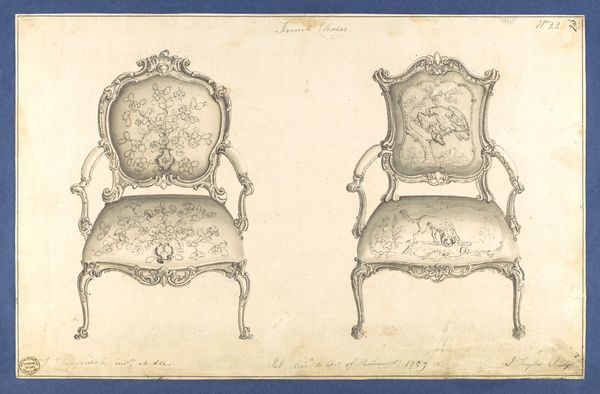
Fire Screens, in Chippendale Drawings, Vol. I 1754
0:00
0:00
drawing, print, pencil, pen
#
drawing
#
neoclacissism
# print
#
coloured pencil
#
pencil
#
sketchbook drawing
#
pen
Dimensions: sheet: 7 7/8 x 13 in. (20 x 33 cm)
Copyright: Public Domain
Editor: This is “Fire Screens, in Chippendale Drawings, Vol. I,” a drawing dating back to 1754 by Thomas Chippendale. It looks to be pencil, pen and ink on paper, showcasing designs for… well, fire screens. They seem so ornate, almost decadent for something purely functional. What strikes you about this work? Curator: These aren't just sketches, they're blueprints of intent. We must look beyond the aesthetic pleasure to consider the means of production and the social context they represent. These drawings served as instructions, dictating the labor of artisans. The ornate details you mention were not mere decoration; they were calculated markers of status, reflecting the consumption habits of the wealthy elite. How would a craftsman in Chippendale's workshop have interpreted this drawing, understanding it as labor, material, and ultimately, wealth? Editor: I suppose I was viewing it through the lens of ‘high art’—focusing on the artistry, the Neoclassical influences maybe? I hadn't considered it so explicitly in terms of labor. But wouldn't some argue this *is* high art, not craft? Curator: That is the critical point: where do we draw those lines, and who benefits from their existence? Think about the time and skill required to execute these designs in wood. Each curve, each flourish translates to hours of painstaking work by skilled artisans whose names are largely lost to history. Their labor fuels the luxury market. What does it mean when we separate the 'art' from the 'craft,' essentially divorcing the idea from its material execution and the human cost involved? Editor: So by focusing on the drawing itself, the materials implied and the process, we can get closer to understanding the social dynamics of the time. Is that right? Curator: Precisely. It encourages a more democratic reading, acknowledging the collaborative effort and the socio-economic structures embedded within what appears at first glance to be simply a beautiful design. Editor: That's fascinating, I'll definitely be looking at design and craft with fresh eyes from now on. Thanks!
Comments
No comments
Be the first to comment and join the conversation on the ultimate creative platform.
